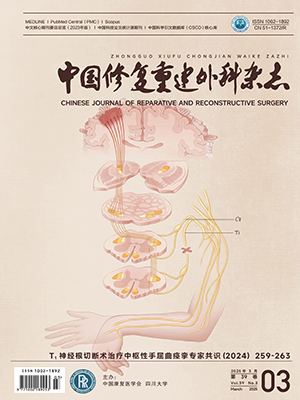Objective To analyze the cl inical appl ication and effect of three operation methods in treatment of senile intertrochanteric fracture. Methods From July 2004 to February 2007, 73 patients with intertrochanteric fracture were treated. Of 73 patients, 33 patients were treated by artificial bipolar femoral head (ABFH group), 18 patients by dynamic hip screw (DHS group) and 22 by proximal femoral nail anti-rotation (PFNA group). In ABFH group, there were 19 males and 14 females with age of (72.5 ± 3.8) years. The injury was by tumbl ing in 19 cases, by accident traffic in 7 cases, fall ing from height in 4 cases and others in 3 cases, including 6 cases of type I, 9 cases of type II, 11 cases of type III and 7 cases of type IV according
to Evans classification. The Harris hip score was 16.8 ± 4.8, and the disease course was (21.2 ± 7.8) hours. In DHS group, there were 10 males and 8 females with age of (69.5 ± 3.2) years. The injury was by tumbl ing in 11 cases, by accident traffic in 5 cases, fall ing from height in 1 case and other in 1 case, including 6 cases of type I, 3 cases of type II, 5 cases of type III and 4 cases of type IV according to Evans classification. The Harris hip score of was 18.6 ± 5.5, and the disease course was (19.8 ± 6.5) hours. In PFNA group, there were 13 males and 9 females with age of (70.3 ± 3.5) years. The injury was by tumbl ing in 11 cases, by accident traffic in 6 cases, fall ing from height in 3 cases and others in 2 cases, including 5 cases of type I, 6 cases of type II, 6 cases of type III and 5 cases of type IV according to Evans classification. The Harris hip score was 20.4 ± 6.6, and the disease course was (20.0 ± 5.8) hours. All fractures were fresh. There were no significant difference in general data between three groups (P gt; 0.05). Results In ABFH group, all incisions healed by first intention, but deep vein thrombosis occurred in 1 case on the postoperative third day. In DHS group, incisions healed by first intention in 16 cases and by second intention in 2 cases, coxa adducta occurred in 2 cases after operation. In PFNA group, all incisions healed by first intention. Cacothesis in pate occurred in 1 case after operation. There were significant differences in operation time, blood loss, and out-of-bed time (P lt; 0.05). The patients were followed up (30.5 ± 6.5) months in ABFH group, (27.6 ± 6.2) months in DHS group, and (24.8 ± 5.4) months in
PFNA group. The union time of fracture was (7.5 ± 2.5) months in ABFH group, (8.4 ± 2.2) months in DHS group and (7.2 ± 2.4) months in PFNA group. There were significant differences in Harris score between before operation and after operation and between different time after operation in three groups (P lt; 0.05). Conculsion The three operative methods have some their superiority, but the replacement of artificial bipolar femoral head is more suitable for the senile unstable intertrochanteric fracture because of simply procedure, short operation time, less blood loss and early ambulation.
Citation: ZHANG Zhongjie,GE Jianhua,LU Xiaobo,CHEN Ge,ZHUO Naiqiang.. EVALUATION ON CURATIVE EFFECT OF THREE OPERATIVE METHODS IN TREATMENT OF SENILE INTERTROCHANTERIC FRACTURE. Chinese Journal of Reparative and Reconstructive Surgery, 2009, 23(5): 556-561. doi: Copy
Copyright © the editorial department of Chinese Journal of Reparative and Reconstructive Surgery of West China Medical Publisher. All rights reserved




